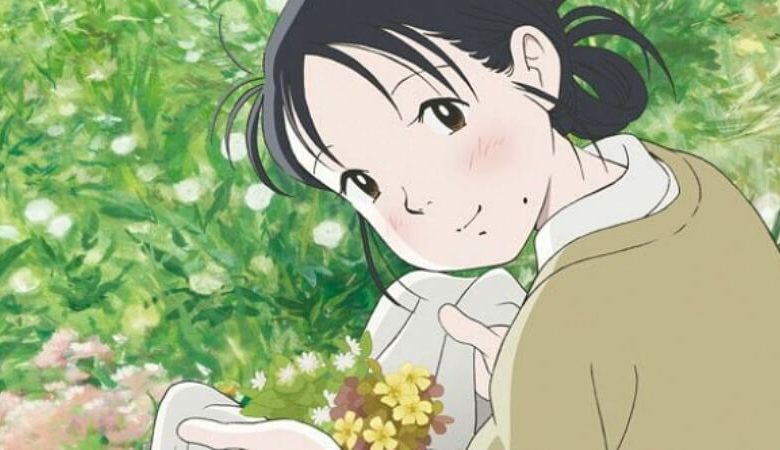
Sunao Katabuchi’s “In This Corner of the World” centers on Suzo Urano, a teenage girl growing up in the small Japanese town of Kure in 1933.
When Suzo is married to a soldier named Shusaku (in a union arranged by her family), she moves to Hiroshima. Since Suzo’s husband is a soldier and barely present, she humbly works hard to please her new in-laws, whose home she shares.
The story builds to the horrible events of 1945, when the WWII bombing devastated and scarred both the landscape and mindset of the survivors.
Katabuchi’s screenplay is adapted from the celebrated Manga of the same name by Fumiyo Kuono. It’s obvious that Katabuchi was a former collaborator with Hayao Miyazaki, as the caliber and depth of animation, both in the texture of its beauty and how it elevates the way we absorb the story, is extraordinary. There is no forced whimsy here, only an attention to lifelike detail that makes this somehow more lucid than a live-action drama.
Suzo’s journey is fraught with difficulty even before war overshadows her home life. We note how she’s sometimes clumsy or forgetful. Her character is neither a fool nor heroine in need of rescuing. Suzo is recognizably human, most movingly in the way she’s overcome with guilt in the third act. Due to how smart Kutabuchi’s screenplay is, the tender way she’s been drawn and the expressive vocal performance by the actress Non, Suzo is an endearing figure.
Rather than use the running time and animation technique to draw out the 129 minutes, the narrative is broken up into little vignettes from Suzo’s life. Most of them are initially humorous recollections with a universal, lived-in feel.
FAST FACT: Sunao Kutabuchi served as assistant director under Hayao Miyazaki on the latter’s 1989 film, “Kiki’s Delivery Service.”
Although we’re aware of the direction the story is taking and the heartbreak coming, Suzo is not a mere symbol. Her life isn’t presented as daydream interrupted by war-inflicted bloodshed. Instead, “In This Corner of the World,” offers a complex, compassionate and surprisingly humorous portrait of those in Hiroshima who were forever changed by the violence of war.
The animation is masterful, offering a unique blend of photo-realistic settings but featuring characters with soft, not overly detailed facial features. Since Suzo is an artist whose skill and vision grows over the course of the film, we see drawings within this cartoon that flesh out her state of mind.
There is no forced whimsy here, only an attention to lifelike detail that makes this somehow more lucid than a live-action dramaClick To TweetThe animation and perspective it creates suggests a childhood memory, as the fragmented narrative, vivid settings and gentle facial features express how youthful memories can be both fuzzy and crystal at the same time.
There’s a sly, knowing moment when Suzo peers at a breathtaking hillside landscape and someone tells her, “Go ahead, draw this boring ocean.” We cut to a beautiful shot of Suzo’s hair blowing in the wind, perhaps suggesting that, in Suzo’s world, there are no “boring” moments or places.
To express herself through art and be in the midst of such a rapturous setting is to be truly alive. As repetitive and difficult as life with her in-laws becomes, Suzo finds moments to bond with her new family and work hard for their approval.
When the story arrives at the introduction of war intruding upon Hiroshima, the approach is unique. Rather than suggest an altogether bleak turn, we see how Suzo and the family deal with late night air sirens and the drills they must endure.
As it happens continuously, we see how it becomes a monotonous annoyance to adjust to. Once “In This Corner of the World” fully immerse the viewer in the darkness or war, Katabuchi alters the direction of the animator’s hand. Suzo’s most harrowing scene of loss is done with great style. The hand-drawn animation becomes more dream-like and surreal in these moments, which only strengthens (rather than distances) our understanding of Suzo’s fractured frame of mind.
While children should see this, the PG-13 rating and a few intense moments with violent imagery should be noted.
The key to making all of this seem disarmingly real are the subtle character movements and exemplary sound effects, which aide the depth of the animation.
While far from the only film to depict what happened at Hiroshima during WWII, “In This Corner of the World” is a valuable, accessible expression of loss and hope, survivor’s guilt and the anguish of carrying those lost during wartime (both the people and places) as paintings that reside in the gallery of the mind.
Even the suggestion of hope and the rebuilding of a family at the end doesn’t feel mawkish but hard earned. This is a miracle of a movie, one that has latched onto my heart and will likely remain there.
